Introduction
This article provides an in-depth exploration of ceramic magnets and their applications.
You will gain insights into various topics including:
- What Ceramic Magnets Are
- The Manufacturing Process of Ceramic Magnets
- Different Types of Ceramic Magnets
- Applications of Ceramic Magnets
- And more...
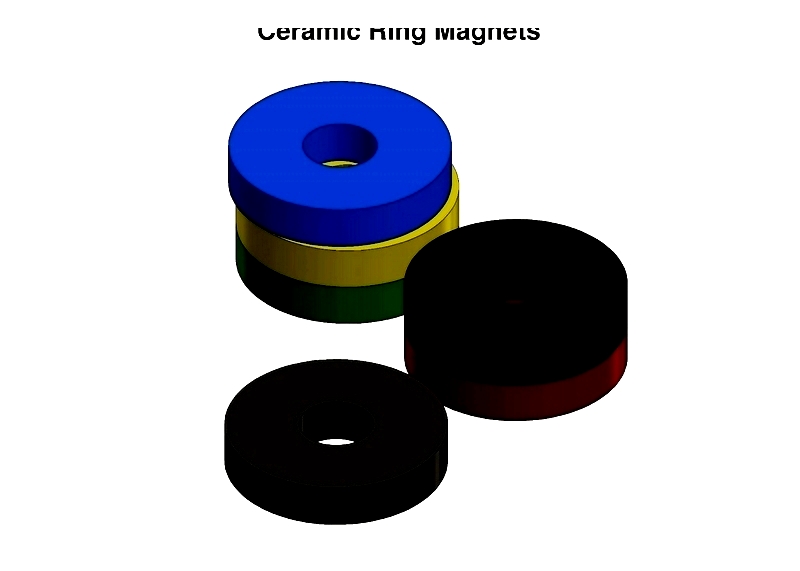
Chapter One – What is a Ceramic Magnet?
Ceramic magnets, commonly known as ferrite magnets, are permanent magnets created by combining iron oxide with strontium carbonate. These synthetic magnets are produced by heating the mixture to temperatures exceeding 2000°F, triggering a chemical reaction that transforms the components into a ferrite material with magnetic properties.
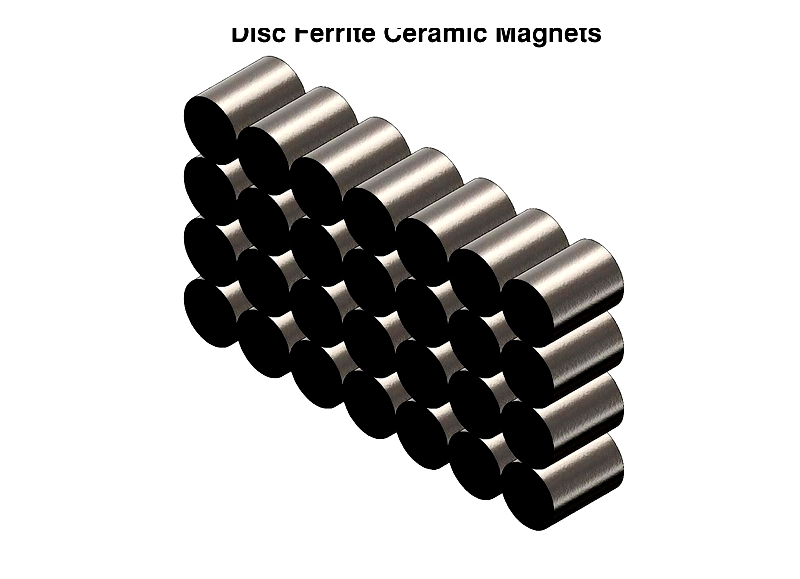
As an affordable alternative to natural magnets, ceramic magnets are widely used in consumer products and industrial applications. They account for approximately 75% of all magnets used globally. Their cost-effectiveness is complemented by their exceptional resistance to corrosion.
Chapter Two – How Ceramic Magnets Are Made
In the 1960s, as industries sought cost-effective alternatives to conventional metal magnets, ceramic magnet production emerged as an innovative solution. This development coincided with the electronics industry's rapid growth, where the expense of rare earth and metal magnets significantly affected the production of consumer electronics, electric motors, audio equipment, and recording devices. Ceramic magnets provided an economical, corrosion-resistant, and thermally stable option that transformed magnet technology by delivering superior magnetic performance at lower costs.
Also called ferrite magnets, ceramic magnets are extensively used in various industrial applications due to their strong magnetic properties and resistance to demagnetization. Typical applications include DC motors, magnetic separators, speakers, MRI scanners, sensors, and consumer electronics. The primary component of ceramic magnets is ferrite—a composite material formed by combining iron oxide with strontium carbonate or barium carbonate to optimize both magnetic performance and cost efficiency.
For those seeking durable, reliable, and cost-effective magnets for industrial, automotive, or medical applications, understanding the ceramic magnet manufacturing process—and the benefits of each step—can aid in making informed purchasing decisions and selecting the most suitable magnet type for specific needs.
Ceramic Magnet Manufacturing: A Step-by-Step Guide
Calcining Process
The first step in ceramic magnet production is calcination—a high-temperature process where iron oxide powder and strontium carbonate (or barium carbonate for certain formulations) are mixed and heated in specialized furnaces. Calcination modifies the chemical and physical properties of solid materials by subjecting them to intense heat, typically above 1800°F (1000°C). This process is crucial for forming the ferrite compound (e.g., SrO-6 (Fe2O3)) that establishes the base magnetic characteristics.
During calcination, manufacturers may add elements like cobalt, lanthanum, or rare earth additives to enhance performance traits such as coercivity and remanence in the final ceramic magnet. This chemical transformation is fundamental for producing high-quality ferrite magnets required in modern applications.
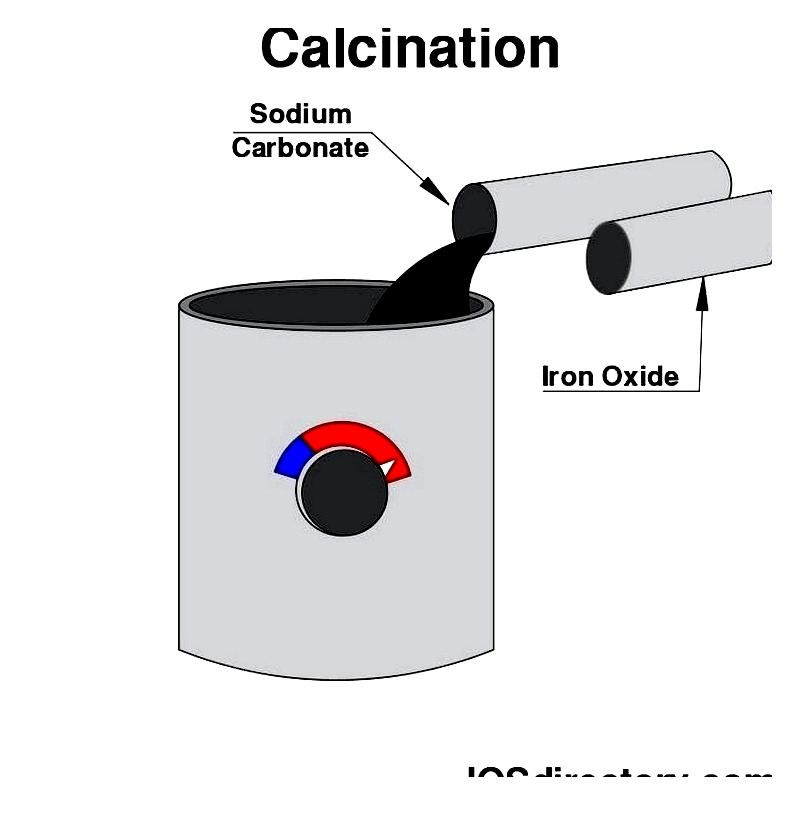
Milling Process (Pulverization and Particle Size Reduction)
Milling is a critical phase that influences the magnetic and mechanical properties of the final ceramic product. The objective of milling, or pulverization, is to reduce the ferrite or ceramic powder into extremely fine particles, often as small as two micrometers (µ) or less. These finely milled particles each contain a single magnetic domain, promoting uniform magnetization and improved energy product in finished magnets. Consistent particle size is essential for reliable magnetic field output and the production of high-performance ferrite magnets.
A common milling technique involves ball mills, which use steel or ceramic balls in a rotating drum to grind the ferrite material. Through repeated impacts and friction, the ball mill converts granulated ferrite into a uniform, ultrafine powder. This material enables the creation of complex, custom magnet shapes for specialized industrial applications, ranging from loudspeakers to electric vehicle motors.
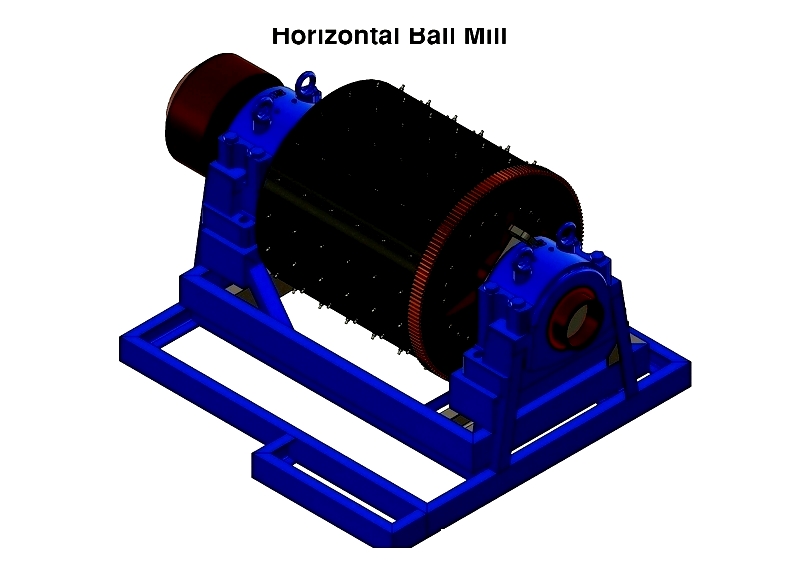
Slurry Preparation
Transforming the ultrafine ferrite powder into a workable medium is essential for subsequent processes. To achieve this, a precise amount of water or binder is added to form a slurry—a uniform, mud-like suspension. This step ensures even particle distribution, optimal packing density, and improved handling during pressing or molding. Proper slurry consistency is vital for achieving the desired magnet density, shape accuracy, and minimizing air pockets.
Compacting: Pressing and Alignment
Compacting is where the ceramic magnet begins to take its final shape. In this stage, the wet slurry is pressed using hydraulic or isostatic presses into custom molds designed for standard or specialized magnet shapes (disks, rings, blocks, arcs, etc.). For high-performance magnets, an external magnetic field is applied during pressing to align the anisotropic magnetic domains for maximum magnetic directionality—a key factor for powerful permanent magnets. This process produces oriented (anisotropic) ferrite magnets with superior energy density.
Alternatively, dry pressing without field alignment results in isotropic ceramic magnets, which can be magnetized in any direction but generally exhibit lower energy product. The choice between isotropic and anisotropic magnets depends on the intended application: anisotropic types are preferred for demanding uses like electric motors and high-efficiency magnetic assemblies.
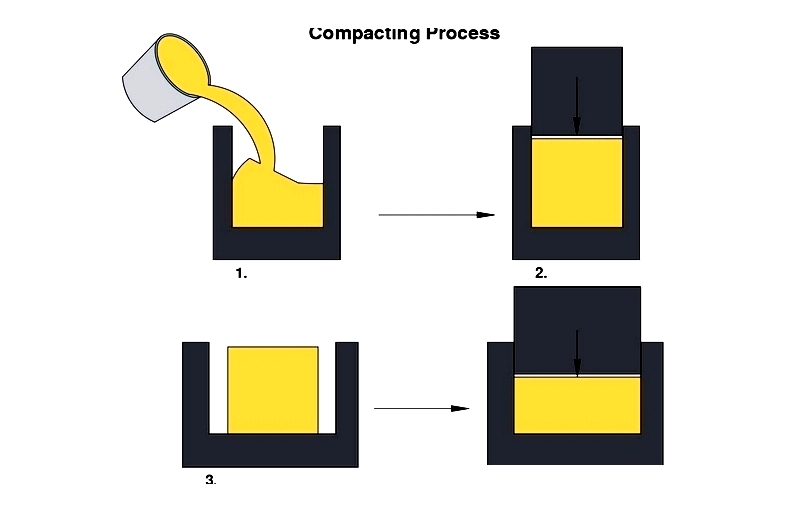
Sintering
Sintering, also known as ceramic firing or frittage, is essential for converting compacted powder into a dense, durable magnetic solid. In specialized kilns or high-temperature ovens, the pressed magnets are heated from 482°F (250°C) up to 1652°F (900°C) for 20 to 36 hours, depending on quality requirements and magnet volume. This controlled high-temperature environment promotes atomic diffusion and solid-state bonding, closing gaps between powder particles and significantly enhancing magnet strength, durability, and resistance to demagnetization.
Unlike conventional melting, sintering bonds particles without liquefying the materials, maintaining shape integrity while producing a cohesive, hard ceramic magnet. Precise control of the sintering profile ensures tight tolerances and consistent performance needed for critical applications such as automotive sensors and power generation equipment.
The diagram below illustrates the transformation of ferrite particles during sintering, highlighting densification and grain growth at each stage.
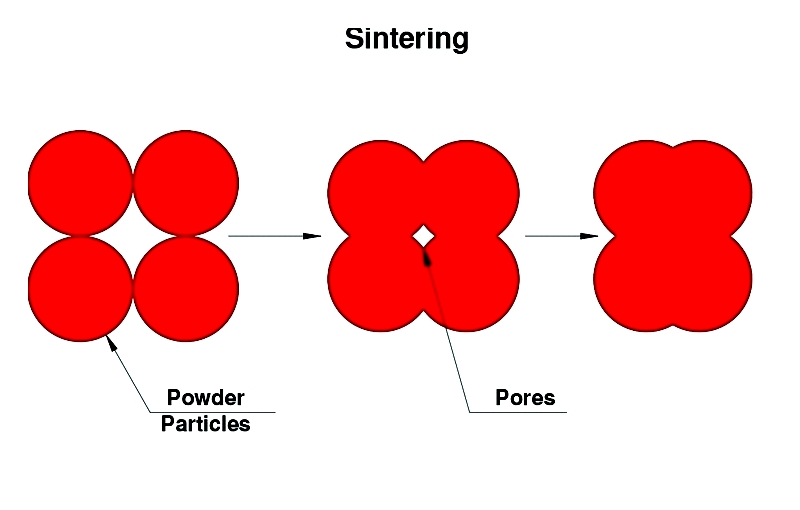
Machining & Finishing
After sintering, ceramic magnets must be cooled to room temperature and processed to meet precise dimensional specifications. Their brittle, hard structure requires diamond-coated grinding and cutting tools for accurate shaping, hole drilling, or surface finishing. Advanced CNC machining methods are often employed to achieve intricate forms and ultra-precise measurements, enhancing performance and compatibility with automated assembly systems. Each pass of the diamond tool carefully removes material to achieve the desired tolerances, ensuring magnets fit seamlessly into modern high-speed manufacturing processes.

Coating, Plating, and Surface Protection for Ceramic Magnets
Although ceramic magnets are naturally corrosion-resistant, surface coatings or platings are often applied to improve wear resistance, prevent chipping, or enhance electrical insulation. Selecting the appropriate finish is crucial for applications involving frequent handling, exposure to moisture, or contact with sensitive electronic components. Below are common ceramic magnet coatings and their benefits:




